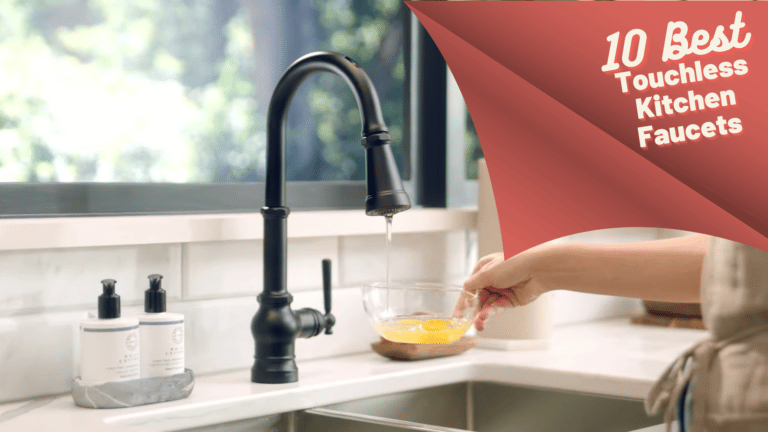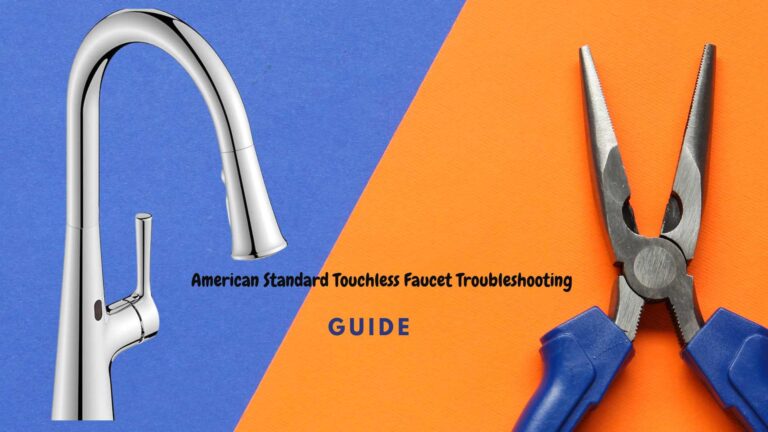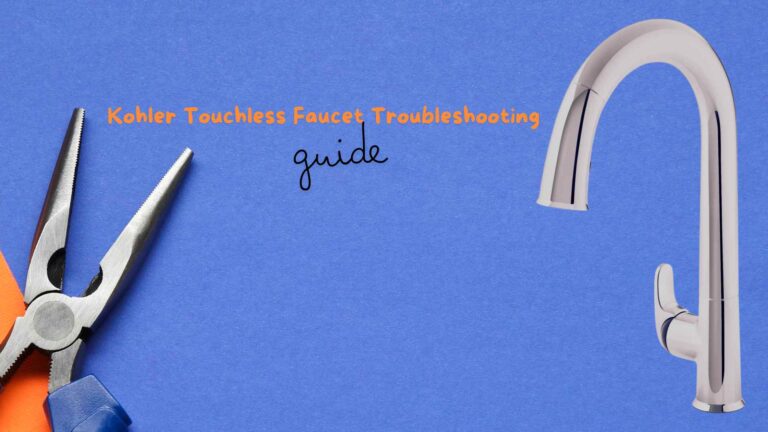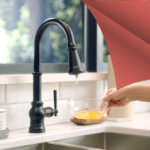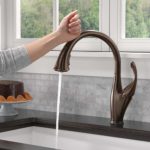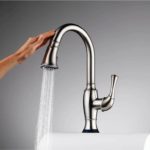The touchless faucet is an electronic kitchen and bathroom fixture that uses motion sensors to automatically turn on the water flow whenever it detects a person’s hand. In the kitchen, a touchless faucet can save you from having to turn on the water manually. While in the bathroom, it will save you from having to touch the handle with dirty hands and spread germs and bacteria. The technology behind these touchless faucets is quite simple. The sensor in the faucet detects any object that comes within a few inches of its sensor. When it detects something, it automatically turns on the water flow from your sink and starts running for a certain time.
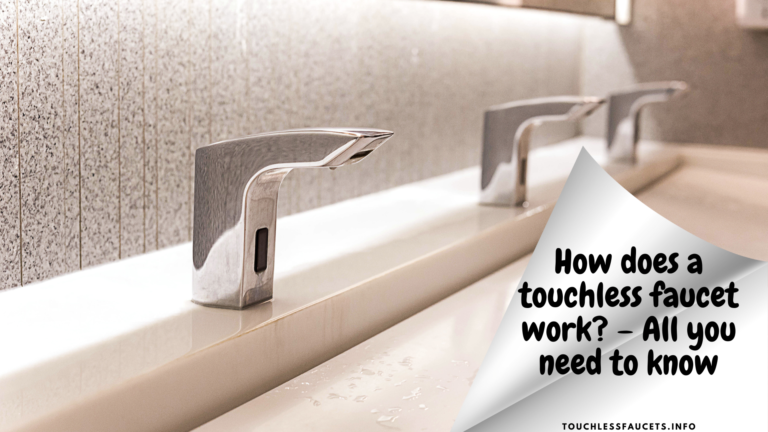
How does a touchless kitchen faucet work?
Even though all touchless faucets have the same technology. There is a slight difference between touchless kitchen faucets and bathroom faucets.Touchless kitchen faucets have several components that work together to trigger the flow of water when you wave your hand in front of them.
1. Sensor
This is the part of your touchless faucet that senses when you wave your hand in front of it and then triggers the water flow. It also has a timer that shuts off after a few minutes so it won’t waste any water if you don’t want to use it anymore.
2. Solenoid Valve
This is another part of your touchless kitchen faucet that controls how much water flows through it at any given time by opening or closing an electrical circuit. When you wave your hand in front of the sensor it will send an electrical signal down through the solenoid valve which makes it open or close the water flow.
3. The Handle
In addition to controlling the water pressure, the handle also controls the water temperature. By moving the handle, you can choose between cold and hot water. Most faucets utilize a cartridge that directs the water flow. Newer models, such as those from Moen, use electronic control systems.
4. Power Source
The power source can be as simple as batteries or an electrical outlet that powers up the sensor and solenoid valve. Without electricity, these devices will not automatically turn on when they detect movement nearby.
Related Article: Best Touchless Kitchen Faucet Reviews
How does a touchless bathroom faucet work?
A touchless bathroom faucet has an infrared sensor, a solenoid valve a power source, and some of them also have a mixer handle. Same as touchless kitchen faucets the sensor sends a signal to the valve and water flows. Except for the fact that the bathroom touchless faucet only works when your hand passes in front of the sensor. This is a valuable feature since it reduces water waste, especially in public areas.
Most commercial and residential touchless bathroom faucets have a mixing valve where you can preset your desired water temperature. There are also some models with a mixing handle that allows you to adjust the flow rate. In addition, you can switch between hot and cold water.
Related Article: Best Touchless Bathroom Faucet Reviews
Are touchless faucets worth it? The pros and cons of owning one are listed below
Touchless faucets are a great way to save water, but they are not for everyone. As with every new technology, touchless faucets have their pros and cons. The good thing is that they are convenient and easy to use. Most people find them more efficient than their old-fashioned counterparts. The bad thing is that they can be pricey, so you need to decide whether they are worth the extra cost or not. If you are looking for a new kitchen or bathroom fixture, then you may want to consider investing in one of these touchless faucets Here are some of the pros and cons of owning one:

Related Article: Touch vs Touchless Faucet – Which one is worth it?
What is the cost of a touchless faucet?
Touchless faucets are more expensive than standard ones, but they are worth it. They generally have more features, so they can help you save time and water. If you’re looking for a touchless bathroom or kitchen faucet, here is what you need to know about pricing:
Touchless Kitchen Faucets
In our research, we found that a touchless kitchen faucet can range from 150$ to more than 900$ for premium fixtures with voice control and extra features. A professional plumber will cost you around $250 if you are not a handy person. However, touchless faucets are very easy to install. The hardest part is removing the old faucet. *Depending on the manufacturers and retailers and their products, prices may vary. Price ranges are approximations.
Brand | Price Range | Customers Rating | Latest Price |
Moen | $200 to $700 USD | ||
KOHLER | $250 to $1000 USD | ||
Pfister | $250 to $300 USD | ||
American Standard | $300 to $500 USD | ||
Kraus | $200 to $300 USD | ||
Various other brands | $100 to $300 USD |
Touchless Bathroom Faucets
The price of a touchless bathroom faucet starts from around 100$ and can reach up to 800$ for luxury faucets and those for commercial use. A professional plumber should charge around 150 dollars. The most effective way to save money is to install it yourself. The whole process is easy. Furthermore, these faucets come with installation instructions and all the parts needed. *Depending on the manufacturers and retailers and their products, prices may vary. Price ranges are approximations.
Brand | Price Range | Customers Rating | Latest Price |
Moen | $300 to $700 USD | ||
KOHLER | $250 to $500 USD | ||
American Standard | $250 to $400 USD | ||
Sloan | $300 to $700 USD | ||
Zurn | $300 to $600 USD | ||
Various other brands | $100 to $400 USD |
Conclusion
Touchless faucets are here to stay, and they’re only just beginning to make their impact on the world of kitchen and bathroom technology and design. Are they better than traditional faucets? Well, there’s plenty of debate on that point. But the important thing to understand is that these new faucets have come about because the world has changed—and they’re going to change again in the years to come. That’s why it’s so important to stay informed, so you can make sure your home is ready for whatever happens next.


